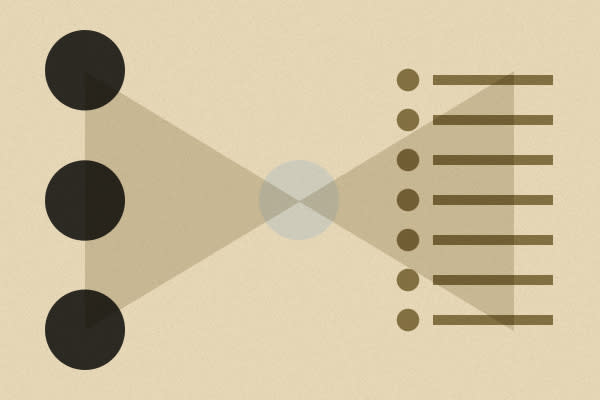As a project manager, I realize how beneficial it is to have a single point of contact throughout a project to represent the organization and communicate final decisions. It’s great for a project’s efficiency and streamlined communication. However, as much as I love efficiency, I find there is great value in starting a project by doing the exact opposite of streamlining communication—allowing time to freely talk with multiple stakeholders individually to hear their perspectives on their organization and how their roles relate to their website.
We recently began the task of redesigning CodePen and completed formal stakeholder interviews with the three founders as part of design research. I have been a part of similar research during the discovery phase of many web projects, where informational interviews mostly took place during larger group discussions. With CodePen, I had the opportunity to participate in private, individual interviews with each stakeholder, and I found taking this time provided enormous, invaluable insight into a client’s business and web needs.
I would encourage any web professional to work stakeholder interviews into the process. Here are some top tips that I learned to help make the most of this process.
1. Perform as Many Individual Interviews as Possible
To the degree that is reasonable, try to perform as many individual interviews as possible (this may not always make sense for very large organizations). Individual interviews don’t carry some of the dynamics that group conversations do. The stakeholder can speak freely without other competing voices or having to wait politely for his or her turn in a group discussion. When good rapport is established, an individual interview can yield mountains of rich information that would probably not otherwise emerge in a more democratic group setting. Also, different people are naturally better at communicating clearly about what a certain area may need. By taking time with a variety of stakeholders, you’ll better cover your bases and reveal information that may not come from just one or two people representing the group.
2. Record the Interview
We recorded our stakeholder interviews with CodePen, and I’m so glad we did. It allowed us the option to listen again if we wanted and allowed core team members on our side to still listen to an interview at a convenient time for them without the hassle of scheduling across several people’s calendars.
Another benefit of recording the interviews was having the source conversation available for reference later. Because I was trying to take notes fast while listening and participating (even though we had the benefit of having separate people to interview and take notes), some of my notes later had me questioning if I really had heard the person’s answer accurately. The recordings were a great reference point to ensure accuracy.
3. Schedule Each Interview Close Together
Speaking of scheduling, try to schedule the interviews close together if possible. I am a believer that large gaps of time on project phases hamper creativity, so it really helps to keep the interviews close to keep momentum and creative ideas flowing. For CodePen, we were able to schedule the interviews over just two days, which allowed our team to easily stay immersed and engaged in the conversations.
4. Document Any Insights from the Team Immediately After the Interview Ends
I would also urge taking a few minutes and documenting any key insights or thoughts from you or your team immediately after the interview ends. It’s best to do this while the conversation is still fresh on everyone’s mind.
I learned this a bit of the hard way with CodePen. Because we completed our interviews on a Friday afternoon, I scheduled time early the next week to review all my interview notes and summarize the thoughts and insights. That next week, I found myself wishing I had done that before the long time gap of the weekend. Although it turned out well, I think it would have gone much faster if I hadn’t had the gap between the interviews and their analysis.
5. Don’t Let the Interviewee’s Role Limit His or Her Thoughts
Many people will probably be respectful of what their expertise is and isn’t within their organization, but that doesn’t mean their opinions should be confined to one expertise. A developer may make a brilliant business observation, or a marketer who uses the CMS daily may rattle off vital technical requirements while explaining his or her job. Be sure to ask broad enough questions to allow for a range of thoughts and encourage them to go ahead and share their thoughts on a function even if it is not necessarily their speciality.
6. Create a Visual Summary of Your Interviews
This was probably my favorite part of distilling the information from our interviews. As a reminder to our team, we created a visual summary of the person’s name, title, photo, and summary phrases as a highlight of each interview. When time passed and our minds had moved onto being focused on user interviews and survey data, we could easily reference this visual summary to refresh the conversations we had during this part of the research.
Learn More About Stakeholder Interviews
Performing stakeholder interviews was such a positive and insightful experience that I wouldn’t want to do another project without them. If you’re looking to learn more about effective stakeholder interviews, I highly recommend reading Kevin Hoffman’s “Stakeholder Interview Tips” and Kim Goodwin’s “A Stakeholder Interview Checklist.” You can also learn more about our research process with CodePen by checking out the Stakeholder Interview Script from our CodePen redesign and Katie’s foundry article on our full CodePen research process.

